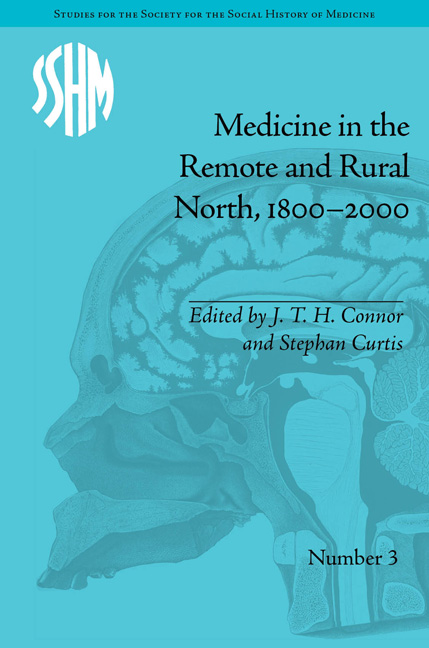Book contents
- Frontmatter
- CONTENTS
- Acknowledgements
- List of Contributors
- List of Figures and Tables
- Introduction: Cores/Peripheries – Rural/Remote: Medicine, Health-Care Delivery and the North
- Part I Remote Medicine and the State
- Part II Doctors and Doctoring in Remote Areas
- Part III Women, Health Care and the Practice of Medicine
- Notes
- Index
Part III - Women, Health Care and the Practice of Medicine
- Frontmatter
- CONTENTS
- Acknowledgements
- List of Contributors
- List of Figures and Tables
- Introduction: Cores/Peripheries – Rural/Remote: Medicine, Health-Care Delivery and the North
- Part I Remote Medicine and the State
- Part II Doctors and Doctoring in Remote Areas
- Part III Women, Health Care and the Practice of Medicine
- Notes
- Index
Summary
Introduction
The remote regions of Europe and North America provided an environment in which women were most able to challenge and overcome many of the social and professional restrictions placed upon them. This was as true in nineteenth-century Greenland as it was in twentieth-century Canada or Finland. Mette Rønsager demonstrates that Danish authorities gave midwives tremendous responsibilities not only to bring medical care to the indigenous people of Greenland, but also to train local women to become skilled birth assistants. In this way they were instrumental to bridging the gap between Danish and Greenlandic cultures and in so doing were performing many of the same duties as male explorers and bureaucrats who set out to claim and control new lands and people. Nurses in New Brunswick during the middle third of the twentieth century, who are the subject of Linda Kealey's contribution, were engaged in a particularly complex set of negotiations between local populations and the Red Cross, and between social and professional expectations and their own personal goals. The Red Cross was almost entirely responsible for providing nursing care especially in the more isolated parts of the province and relied heavily on public support for its initiatives. The nurses were charged, not only with responding to medical emergencies, but also improving the health of individuals and, by extension, ensuring the health of the nation.
- Type
- Chapter
- Information
- Medicine in the Remote and Rural North, 1800–2000 , pp. 169 - 170Publisher: Pickering & ChattoFirst published in: 2014



